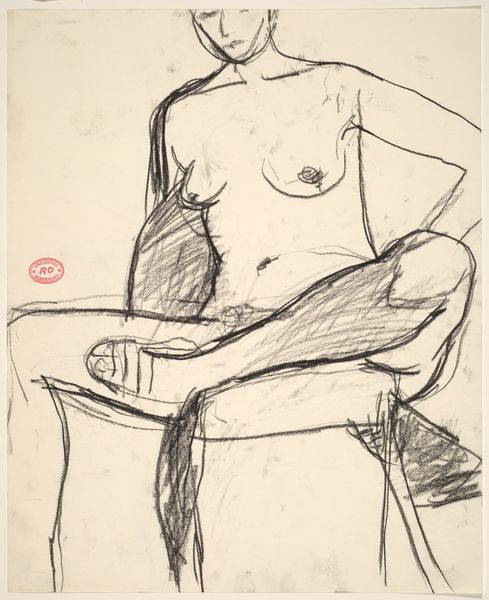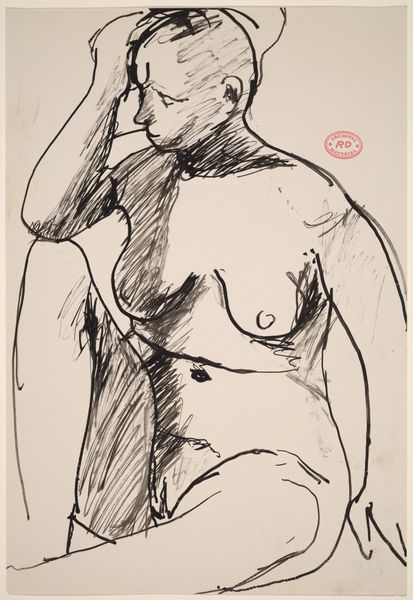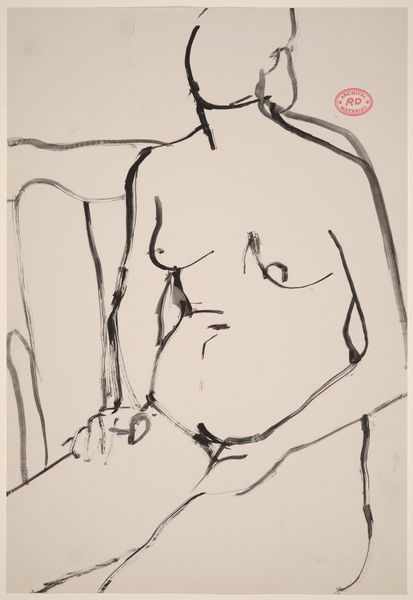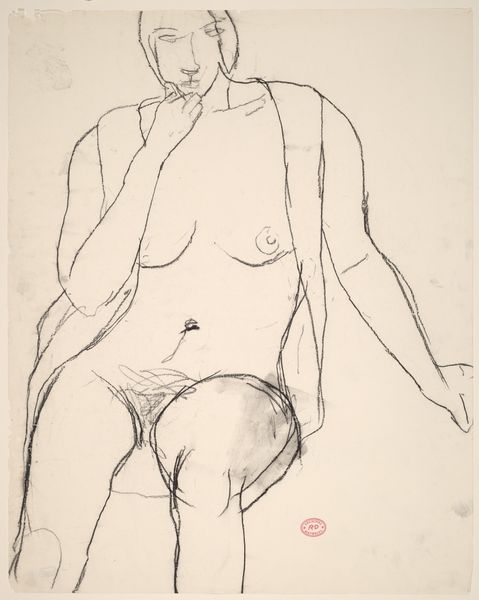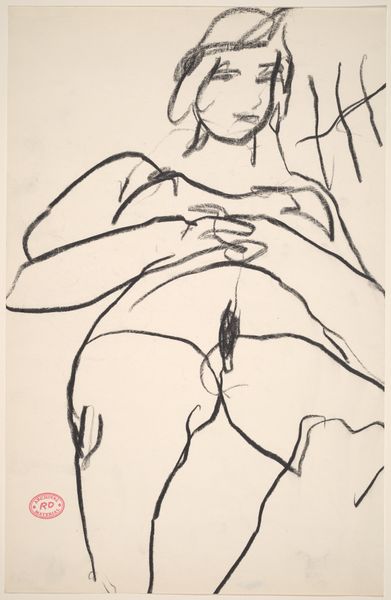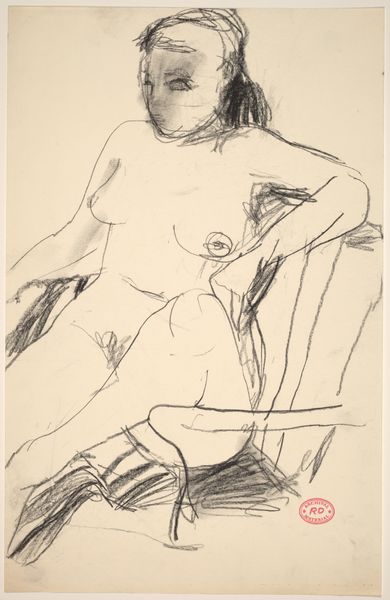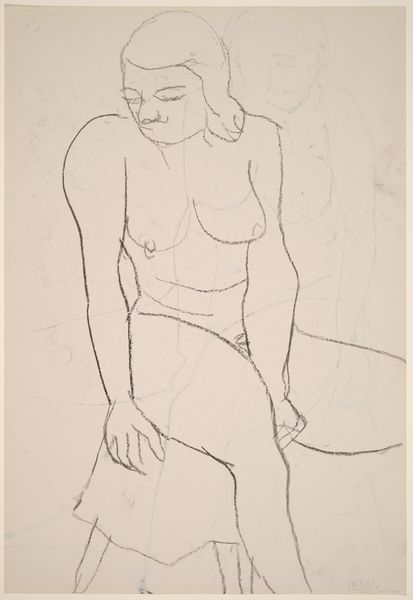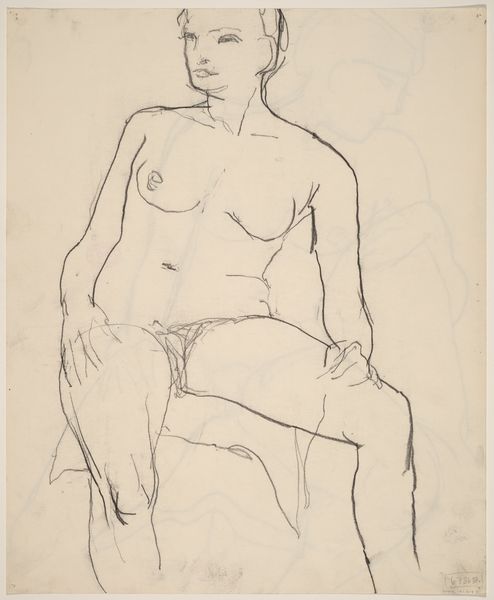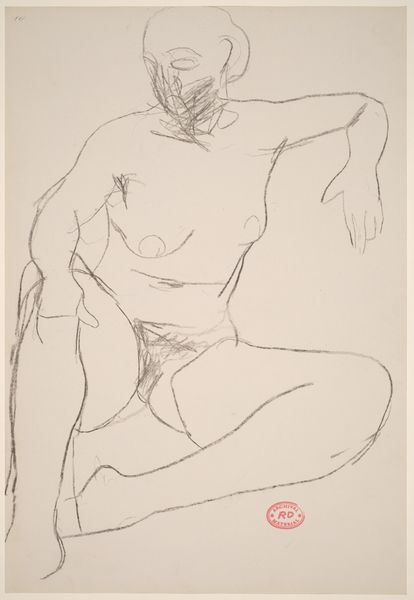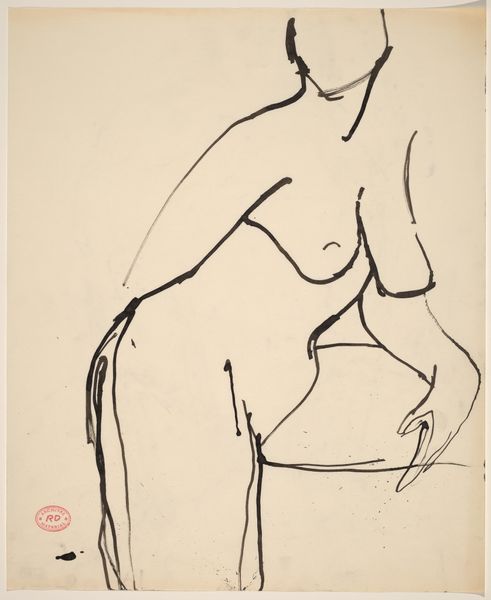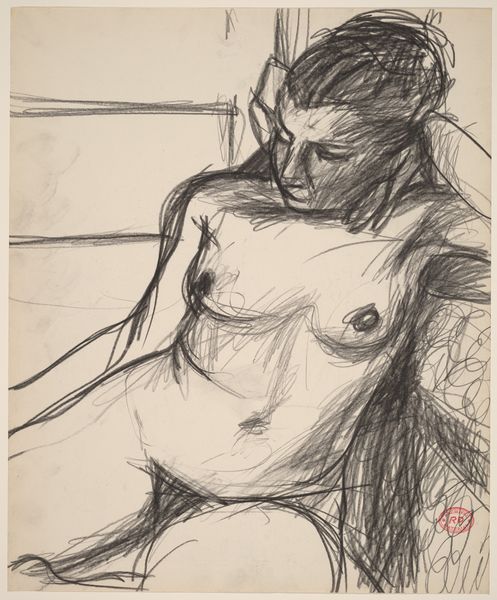![Untitled [seated nude with her hand on her left knee] by Richard Diebenkorn](/_next/image?url=https%3A%2F%2Fd2w8kbdekdi1gv.cloudfront.net%2FeyJidWNrZXQiOiAiYXJ0ZXJhLWltYWdlcy1idWNrZXQiLCAia2V5IjogImFydHdvcmtzLzg5ZTIyMWQ3LTQ1YmItNGVlYi1iMDQxLTY3ODAyOTY4MDllMy84OWUyMjFkNy00NWJiLTRlZWItYjA0MS02NzgwMjk2ODA5ZTNfZnVsbC5qcGciLCAiZWRpdHMiOiB7InJlc2l6ZSI6IHsid2lkdGgiOiAxOTIwLCAiaGVpZ2h0IjogMTkyMCwgImZpdCI6ICJpbnNpZGUifX19&w=3840&q=75)
Untitled [seated nude with her hand on her left knee] 1955 - 1967
0:00
0:00
drawing, graphite
#
portrait
#
drawing
#
bay-area-figurative-movement
#
graphite
#
nude
Dimensions: overall: 43.2 x 35.6 cm (17 x 14 in.)
Copyright: National Gallery of Art: CC0 1.0
Curator: Here we have Richard Diebenkorn's "Untitled [seated nude with her hand on her left knee]," a graphite drawing made sometime between 1955 and 1967. What strikes you initially about this piece? Editor: The visible strokes—the deliberate quality of each line laid down with graphite. There's a rawness, an immediacy to the medium itself. Curator: Indeed. That unrefined application speaks to the complexities of portraying the female form. During this era, representations often served patriarchal agendas, but Diebenkorn's work seems to complicate a singular perspective, acknowledging the artist’s and sitter's individual subjectivity. Editor: It almost seems like a sketch, but I find myself drawn to the weightiness the artist achieves. The way the dark graphite describes volume in the drapery contrasting the figure itself... that materiality tells a story of artistic labour, almost like a social artifact recording its own making. Curator: I think that sense of observation plays a critical role. Consider the time frame – mid-century America, rife with rigid societal expectations around gender and sexuality. What possibilities arise from a representation of a female form through a progressive lens? How does it offer a commentary on visibility and invisibility? Editor: The exposed quality of the sketch really underlines the means of production; there are erasures visible around the nose that reveal that this final product required choices and reworkings. The deliberate act of observing and recreating gives value to both the object and the artist. It shows respect for material realities and skilled making. Curator: Precisely! This work resists reducing the figure to a mere object. Instead, it embraces process, exposing the labour and decision-making involved in shaping her image. That openness allows a multifaceted interpretation of female identity during a pivotal point in art history. Editor: So the drawing is a testament not only to a depicted form, but also to the interaction between the materials, the artist, and the sitter. An artifact of labor revealing social dynamics of seeing, shaping, and self-perception. It creates a space for appreciation of process, skill, and materiality as powerful vehicles of representation. Curator: That gives us a lot to think about moving forward. Editor: Indeed. Let’s go to the next work.
Comments
No comments
Be the first to comment and join the conversation on the ultimate creative platform.
